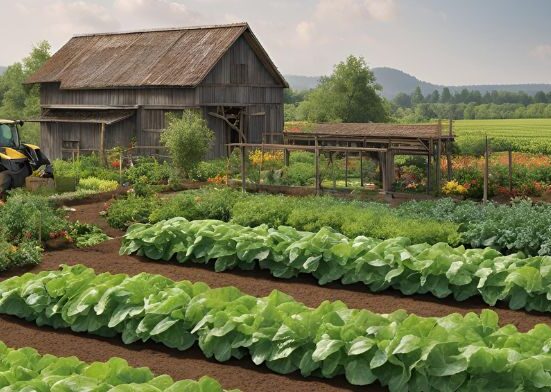Mules are fascinating creatures that have captured human interest for centuries, blending the best traits of their parent species, horses and donkeys. A mule is the offspring of a male donkey, known as a jack, and a female horse, called a mare. This unique hybrid combines the strength, endurance, and size of a horse with the surefootedness, resilience, and calm temperament of a donkey. Mules have been invaluable throughout history, serving as work animals in agriculture, transportation, and even in military operations due to their reliability and stamina.
Despite being sterile and unable to reproduce, their hybrid vigor often makes them healthier and longer-lived than either of their parents. Understanding the origins, characteristics, and practical uses of mules not only highlights their remarkable adaptability but also sheds light on why humans have depended on them for thousands of years. Their story is one of nature’s perfect partnership between two distinct species.
Why Mules Matter
If you travel through rural landscapes or mountainous trails, you may still encounter mules at work. Despite the rise of tractors, trucks, and modern machinery, mules remain valuable in many regions because of their endurance, strength, and intelligence. For centuries, mules have been indispensable partners to humans. They’ve carried soldiers’ supplies in wars, hauled crops from fields, and transported goods across treacherous terrains where no wheeled vehicle could pass. Beyond work, mules have even influenced cultural traditions, literature, and folklore. Understanding what donkey horse makes a mule unique requires examining its origins, traits, and uses—something we’ll explore step by step in this mule guide.
What Is a Mule?

A mule is a hybrid animal resulting from the crossbreeding of a male donkey (called a jack) and a female horse (called a mare). Mules inherit traits from both parents, combining the strength, endurance, and surefootedness of a donkey with the size, speed, and intelligence of a horse. Known for their resilience and hardiness, mules are often used as working animals in agriculture, transportation, and mountainous terrain, where their stamina and stability make them invaluable. Unlike horses, mules tend to be more cautious and less prone to injury, making them reliable for heavy labor and long ranch vs farm treks.
Most mules are sterile, meaning they cannot reproduce, which makes each mule unique. Their temperament is generally calm and patient, though they can exhibit stubbornness if mishandled. Valued for both utility and companionship, mules have played a vital role in human history, bridging the qualities of two powerful species into one versatile and enduring hinny animal.
The Origins of Mules
Mules are hybrid animals created by crossing a what is a mule male donkey (jack) with a female horse (mare). Their history dates back thousands of years, with evidence of their use in ancient civilizations such as Mesopotamia, Egypt, and China. Valued for their strength, endurance, and surefootedness, mules quickly became essential for farming, transportation, and military purposes. Unlike horses, they are more resilient in harsh conditions, and compared to donkeys, they can carry heavier loads. This unique blend of traits made mules a prized working animal throughout history, shaping agriculture, trade, and travel across many mule horse cultures and regions worldwide.
Ancient Domestication
The history of mules dates back thousands of years. Archaeological evidence suggests that humans began intentionally breeding donkeys and horses as early as 3000 BCE in the Mesopotamian region. The goal was simple: combine the horse’s power with the donkey’s horse donkey mix resilience. The result was a stronger, more intelligent, and more adaptable animal.
Early Records in History
- Egypt: Pharaohs prized mules as royal steeds. They were used for pulling chariots and transporting goods along the Nile.
- Rome: Roman armies relied heavily on mules for carrying military equipment, food, and supplies across their vast empire.
- China: Historical texts describe mules being used for trade caravans along the Silk Road, carrying silk, spices, and precious metals across deserts and mountains.
Spread Across Continents
As civilizations traded and expanded, so did the mule. By the Middle Ages, mules were central to European farming and mining. In colonial America, mules played a crucial role in helping farmers till the soil, especially in the South, where they became a symbol of agricultural horse donkey hybrid productivity.
The Genetics of a Mule
A mule is a hybrid animal produced by crossing a male donkey (jack) with a female horse (mare). Genetically, horses have 64 chromosomes, while donkeys have 62. When combined, the mule inherits 63 chromosomes, an uneven number that prevents regular pairing during reproduction. This genetic mismatch makes most mules sterile, though they retain the physical and behavioral traits of both parents. From horses, mules gain size, strength, and endurance, while donkeys contribute surefootedness, hardiness, and intelligence. The unique genetics of a mule give it remarkable versatility and resilience, making the male horse female donkey a valuable working animal across cultures and history.
Horse and Donkey Parentage
A mule is always born from a male donkey and a female horse. The reverse cross—a male horse (stallion) bred with a female donkey (jenny)—produces a hinny, which is less common due to lower fertility rates and male donkey breeding difficulties.
Why Mules Are Sterile
Because horses and donkeys have different chromosome numbers, their offspring end up with an unbalanced set. This mismatch makes it nearly impossible for mules to produce viable sperm or eggs. However, there have been rare documented cases of fertile female mules, though they are extraordinary jenny donkey exceptions.
Mule vs. Hinny Differences
- Mules usually inherit more horse-like size and body structure.
- Hinnies tend to resemble donkeys more closely in size and temperament.
- Mules are generally stronger and more desirable for work purposes.
Physical Traits of Mules
 Mules, the hybrid offspring of a male donkey and a female horse, inherit a unique blend of physical traits from both parents. They typically have the sturdy, muscular build of a horse, giving them strength and endurance, while also carrying the hardiness and surefootedness of a donkey. Their bodies are typically well-proportioned, with strong legs, broad chests, and tough hooves that make them well-suited for carrying loads and navigating rough what plant attracts hummingbirds terrain.
Mules, the hybrid offspring of a male donkey and a female horse, inherit a unique blend of physical traits from both parents. They typically have the sturdy, muscular build of a horse, giving them strength and endurance, while also carrying the hardiness and surefootedness of a donkey. Their bodies are typically well-proportioned, with strong legs, broad chests, and tough hooves that make them well-suited for carrying loads and navigating rough what plant attracts hummingbirds terrain.
A mule’s head is often more similar to a donkey’s, featuring long ears, a straight face, and expressive eyes, while their manes and tails resemble those of horses but are coarser. Their coats can vary in color—ranging from brown, black, gray, or spotted patterns—depending on the horse’s parent. Known for their resilience, mules also exhibit remarkable stamina, enabling them to work longer hours than many horses with less fatigue.
Size and Build
- Height: Typically ranges from 12 to 17 hands (48 to 68 inches).
- Weight: Between 800 and 1,000 pounds, depending on parentage.
- Build: Strong, muscular body with long limbs, suitable for carrying heavy loads.
Coat Colors and Markings
Mules can inherit almost any coat color from their horse mother, including bay, chestnut, black, or gray. Some also display donkey-like markings such as dorsal stripes or leg mule animal bars.
Distinctive Features
- Long ears (shorter than donkeys, longer than horses).
- Narrower hooves compared to horses, giving them better traction.
- Short, thick manes and thin tails resembling donkeys’.
Behavioral Characteristics
Behavioral Characteristics refer to the observable actions, reactions, and patterns exhibited by an individual, animal, or group in response to internal and external stimuli. These characteristics encompass a wide range of behaviors, including social interactions, communication styles, problem-solving approaches, and emotional responses. They are shaped by a combination of genetic factors, environmental influences, and personal experiences, making each individual’s behavior unique.
Behavioral characteristics can reveal important insights into personality traits, coping mechanisms, and overall well-being. In animals, these traits help in understanding survival strategies, mating habits, and adaptability to changing environments. In humans, they play a crucial role in education, workplace dynamics, and mental health assessments. Studying behavioral characteristics enables researchers, educators, and caregivers to predict responses, enhance interactions, and develop strategies that foster positive behaviors while mitigating challenges.
Intelligence and Temperament
Mules are often described as wiser than horses and more cautious than donkeys. Their intelligence makes them quick learners, but it also means they won’t unthinkingly follow commands without assessing safety. The common stereotype of mules being “stubborn” actually stems from their strong instinct for self-preservation. Unlike horses, which may panic in dangerous situations, mules stop, assess, and refuse to move if they sense risk.
Social Behavior
Mules bond strongly with humans and other animals. They’re highly social and can be loyal, forming strong working partnerships with their handlers.
Historical Uses of Mules
 Mules, the hybrid offspring of a male donkey and a female horse, have played a significant role in human history due to their remarkable strength, endurance, and surefootedness. For centuries, they were relied upon as essential working animals in agriculture, transporting heavy loads across challenging terrain where horses or oxen struggled to navigate. In mining and construction, mules carried supplies through narrow tunnels and over steep paths, proving invaluable to early industrial charcuterie board development.
Mules, the hybrid offspring of a male donkey and a female horse, have played a significant role in human history due to their remarkable strength, endurance, and surefootedness. For centuries, they were relied upon as essential working animals in agriculture, transporting heavy loads across challenging terrain where horses or oxen struggled to navigate. In mining and construction, mules carried supplies through narrow tunnels and over steep paths, proving invaluable to early industrial charcuterie board development.
Militaries also utilized mules extensively, hauling artillery, equipment, and provisions in campaigns where other animals could not operate efficiently. Beyond work, mules contributed to trade and exploration, enabling humans to traverse mountains, deserts, and other remote regions. Their hybrid vigor—combining the intelligence of donkeys with the strength of horses—made them uniquely resilient and adaptable. Even today, mules are celebrated for their historical contributions to farming, transportation, and human expansion across diverse landscapes.
Agriculture and Plowing
Before mechanization, mules were the backbone of the farming industry. They plowed fields, pulled carts, and transported crops. Their strength and endurance made them superior to horses in hot climates.
Throughout history, armies depended on mules:
- In World War I and World War II, they carried ammunition and medical supplies over rugged terrain.
- In mountainous campaigns, they often transported loads where vehicles couldn’t go.
Mining and Transport
Mules were used underground in coal mines and aboveground in logging camps. They could haul heavy loads and navigate narrow paths safely. Mules appear in folklore, proverbs, and even religion. They’re often symbols of resilience, patience, and humility.
Modern-Day Roles of Mules
Mules, the hybrid offspring of a male donkey and a female horse, have played a significant role in human history due to their remarkable strength, endurance, and surefootedness. For centuries, they were relied upon as essential working animals in agriculture, transporting heavy loads across challenging terrain where horses or oxen struggled to navigate. In mining and construction, mules carried supplies through narrow tunnels and over steep paths, proving invaluable to early industrial development.
Militaries also utilized mules extensively, hauling artillery, equipment, and provisions in campaigns where other animals could not operate efficiently. Beyond work, mules contributed to trade and exploration, enabling humans to traverse mountains, deserts, and other remote regions. Their hybrid vigor—combining the intelligence of donkeys with the strength of horses—made them uniquely resilient and adaptable. Even today, mules are celebrated for their historical contributions to farming, transportation, and human expansion across diverse landscapes.
Mule Care and Training
Mules are intelligent, strong, and versatile animals, but caring for them requires understanding their unique needs. Proper mule care begins with providing a balanced diet of hay, grains, and fresh water, along with regular access to salt and mineral supplements. Routine health checks, vaccinations, and hoof care are essential to keep them in top condition. Mules thrive on consistent handling and gentle training methods, as they respond best to patience, clear communication, and positive reinforcement.
Early socialization and gradual exposure to tasks, such as packing, riding, or farm work, help build their confidence and trust. Safe housing with adequate shelter, bedding, and protection from extreme weather is also crucial. By combining attentive care with thoughtful training, owners can foster a strong, respectful bond with their mules, ensuring these hardworking animals remain healthy, obedient, and happy companions for years to come.
Feeding and Nutrition
Mules thrive on a simple diet of grass, hay, and grains. They require less food than horses of similar size, making them a cost-effective option. They prefer open pastures with shelter from extreme weather. Mules adapt well to different climates, from deserts to mountains.
Health Concerns
Mules are generally hardy and less prone to disease than horses. Common issues include hoof problems and parasites, which require regular care. Mules respond best to gentle, consistent training. Harsh methods don’t work with their intelligent, cautious nature. Positive reinforcement and patience are key.
Mules vs. Horses vs. Donkeys
 Mules are intelligent, strong, and versatile animals, but caring for them requires understanding their unique needs. Proper mule care begins with providing a balanced diet of hay, grains, and fresh water, along with regular access to salt and mineral supplements. Routine health checks, vaccinations, and hoof care are essential to keep them in top condition. Mules thrive on consistent handling and gentle training methods, as they respond best to patience, clear communication, and positive reinforcement.
Mules are intelligent, strong, and versatile animals, but caring for them requires understanding their unique needs. Proper mule care begins with providing a balanced diet of hay, grains, and fresh water, along with regular access to salt and mineral supplements. Routine health checks, vaccinations, and hoof care are essential to keep them in top condition. Mules thrive on consistent handling and gentle training methods, as they respond best to patience, clear communication, and positive reinforcement.
Early socialization and gradual exposure to tasks, such as packing, riding, or farm work, help build their confidence and trust. Safe housing with adequate shelter, bedding, and protection from extreme weather is also crucial. By combining attentive care with thoughtful training, owners can foster a strong, respectful bond with their mules, ensuring these hardworking animals remain healthy, obedient, and happy companions for years to come.
Fun Facts About Mules
Mules, the charming offspring of a male donkey (jack) and a female horse (mare), are fascinating creatures with a mix of traits from both parents. Known for their remarkable strength, endurance, and surefootedness, mules have been trusted working animals for centuries, especially in mountainous regions where their agility outshines horses. Surprisingly intelligent and cautious, mules often think before acting, making them less likely to panic than horses.
They inherit the donkey’s stubbornness—but in reality, it’s a clever survival instinct! Mules are usually sterile, meaning they cannot reproduce, yet their unique hybrid vigor gives them exceptional health and longevity. Beyond their work ethic, mules can form strong bonds with humans and other animals, displaying playful and affectionate behavior. From historic battlefields to modern farms, these resilient, clever, and gentle animals continue to captivate animal lovers and historians alike.
Conclusion:
In conclusion, mules are remarkable animals that embody the best traits of their parent species, the horse and the donkey. Their unique origins give them a combination of strength, endurance, and intelligence, making them versatile and dependable companions in agriculture, transportation, and recreation. While sterile, mules demonstrate an exceptional work ethic and resilience, often outperforming horses and donkeys in demanding tasks. Their distinct traits, including surefootedness, longevity, and gentle yet alert temperament, make them highly valued across cultures and regions worldwide.
Understanding the origins, characteristics, and practical applications of mules not only highlights their historical significance but also underscores their enduring relevance in modern times. For anyone considering working with or caring for these extraordinary animals, appreciating their unique biology and capabilities ensures a rewarding and harmonious partnership. Mules are not just hybrids—they are incredible partners shaped by nature and human ingenuity.
FAQ:
What Exactly is a Mule?
A mule is a hybrid animal resulting from the mating of a male donkey (called a jack) and a female horse (called a mare). Mules inherit traits from both parents, combining the strength and size of a horse with the endurance and surefootedness of a donkey.
Why are Mules Sterile?
Mules are generally sterile because they inherit an odd number of chromosomes from their parents—63 in total—which prevents them from producing viable eggs or sperm. This makes natural reproduction impossible, so mules must always come from a horse-donkey pairing.
What are the Physical Characteristics of a Mule?
Mules typically have long ears like a donkey, a short mane, and a tail similar to a horse. Their body are strong and muscular, making them excellent for carrying loads or pulling carts. Coat colors can vary widely, including brown, black, gray, and spotted patterns.
How do Mules behave? Are they more like Horses or Donkeys?
Mules are known for their intelligence, patience, and cautious nature. They are often calmer and more sure-footed than horses and less stubborn than donkeys. This mix makes them highly trainable, reliable, and safe for riding or working in challenging terrains.
How long do Mules live?
Mules typically live between 30 and 40 years, though some can live longer with proper care. They are known for their hardiness and resistance to disease, often outliving both horses and donkeys.







